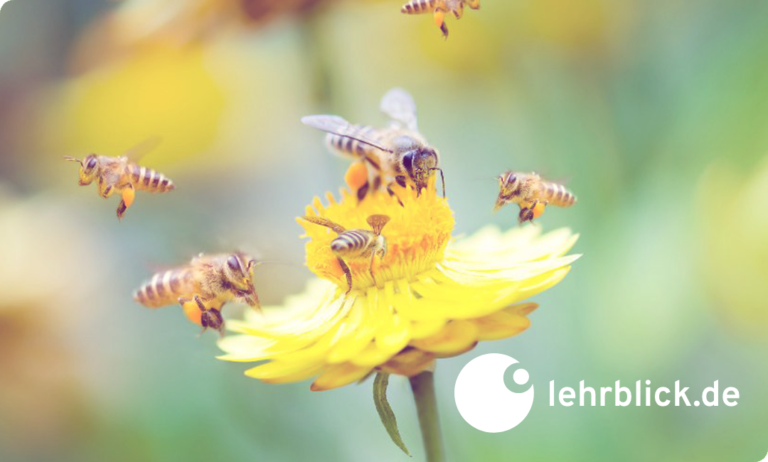Interdisciplinarity is one of the hot topics of our times. Climate change, migration, COVID-19 – society and science are making equal efforts to search for answers to pressing questions that can only be found by crossing the boundaries between different disciplines.
Interdisciplinary learning delineates a process in which learners “integrate information, data, techniques, tools, perspectives, concepts and/or theories from two or more disciplines to craft products, explain phenomena, or solve problems in ways that would have been unlikely through single-disciplinary means” (Boix Mansilla, 2010, p. 289).
Here are a few examples:
- How can we stop climate change? A psychologist, an economist and a geographer consider combined strategies.
- How can we save the diversity of species? A biologist, an educationalist and a political scientist come up with a joint campaign.
- How can we integrate refugees better? A sociologist, an educationalist and a theologian work together to launch a pilot project in a home for refugees.
In the integration process, students use their knowledge from their respective sciences. This can involve core topics, assumptions or scientific findings from their discipline, but knowledge emerging from the disciplines regarding scientific methods and approaches as well as the application of certain instruments or procedures can be used in the same way. The important thing is that these different perspectives are integrated to create added value. This added value can lead to a “tangible” product, like an invention or practical solution, but it could equally be an innovative theoretical insight. What is decisive is that the approach is a joint one. Without the other people in each case, there would have been no result. A common goal and common path are necessary to achieve a common result.
Why is interdisciplinary learning important in university teaching?
Students are the decision-makers of tomorrow. Nowadays, we have three essential tasks as teachers at university. 1) In “academic mode”, our task is to teach knowledge and theory to students. 2) Then, in “employability mode”, we teach with the aim of making students employable. We help them develop essential core competencies like communication and collaboration skills and be able to work in a team successfully and innovatively. 3) In addition, when we are in “responsibility mode”, the goal inherent in our university teaching is to help students develop critical diligence with regard to the sustainability targets and to develop their capacity to take personal responsibility.
Holistic view of academic knowledge
Interdisciplinary learning affects all three task areas. With regard to the “academic mode”, interdisciplinary learning enables a holistic view of academic knowledge and scientific theories. There has been a marked increase in interdisciplinary research and hence interdisciplinary publications. Interdisciplinary learning enables students to gain an insight into this kind of research. Interdisciplinary teaching and learning therefore reflect the scientific heartbeat of our times and are in complete alignment with Humboldt’s ideal of the unity of teaching and research. In interdisciplinary teaching at university, students can explore what it means to pursue interdisciplinary, scientific questions in an interdisciplinary team, how research methods from their own disciplines can be combined in an interdisciplinary way and how you gain new, interdisciplinary insights by integrating approaches from different disciplines.
Coming into contact with perspectives from other disciplines
Due to the increasing requirements in the form of complex tasks and projects, there is high demand for interdisciplinary skills on the labour market. In “employability mode”, through interdisciplinary learning we can enable students to come into contact with representatives of other disciplines, work together with them and master complex tasks. The students learn to adapt their jargon so that students from other disciplines can understand them. This supports the development of communication skills. If you enable students to work in an interdisciplinary team, they learn to set common goals, formulate questions jointly and develop a common method of working. They experience themselves as competent representatives of their own discipline and increase their collaboration skills. Furthermore, interdisciplinary learning promotes the use of the interdisciplinary potential for innovation and prepares students for developing innovative ideas on their own or in an interdisciplinary team and putting them into practice.
Solving complex problems
With regard to the “responsibility mode”, interdisciplinary learning can help students to look at, process and solve complex problems regarding the theme of sustainability in an interdisciplinary way. Society today is facing great challenges: climate change, pollution of the oceans, migration, malnutrition, poverty, corruption, gender inequality, inhumane working conditions and diverse areas of global conflict. These problems are too complex to be solved by one scientific discipline alone and necessitate an interdisciplinary approach. If you enable students to work on socially relevant topics in an interdisciplinary team, they gain first-hand experience of the practical and social added value of their studies.

How can you structure interdisciplinary learning?
Different teaching-learning methods need to be applied so that students can develop their interdisciplinary skills while learning. For one thing, it is about students gaining an understanding of other disciplines. This requires teaching-learning methods that help students from different disciplines “get to know each other and understand one another”. Then it is a question of merging and integrating the different perspectives. This requires methods that enable students to “collaborate” in a way that exceeds the limits of their respective disciplines. It is also about students questioning their own way of thinking as well as the limits of their own subject, appreciating other disciplines and learning to think about processes of learning and working in an interdisciplinary fashion. This requires methods which cause the students to “reflect”. Examples for all three aspects are given below.
Getting to know each other and understanding one another
The “favourite theories” teaching-learning method, for example, is a good one for helping the students “get to know each other and understand one another”. So as to actively preclude misunderstandings due to the different jargon used, students learn how to handle their own jargon sensitively with the help of this method. The first step is for the teacher to explain the communication methods of “active listening” and “explaining clearly”. Active listening requires you to give the other person your full attention, only interpret what they say with caution and not add anything to it. You try to really understand the other person. As regards “explaining clearly”, teachers can refer to the following tips: pique people’s interest, speak clearly and concisely, use simple language, create visualisations, use examples when you speak, and talk in a way that is inspiring. The students subsequently apply what they have learned and divide up into interdisciplinary pairs. In these pairs, the students tell each other about one of their favourite theories from their own discipline (favourite study, favourite insight, etc.) and give each other feedback to clarify.
Collaborating
To promote the students’ interdisciplinary “collaboration”, the teaching-learning method of the “interdisciplinary idea roulette” can be applied, for example. With this method, the students’ interdisciplinary potential for innovation is used through musical accompaniment in the creativity process. Pinboards are set up in the room. The teacher has noted down interdisciplinary questions on the pinboards. The questions should be formulated as open questions so that they address all disciplines involved in equal measure. It is best if the questions have practical and social relevance. The students stand in front of the pinboards in small, interdisciplinary groups. Then the teacher turns the music on. The small groups can discuss their ideas and write them on the pinboards for as long as the song lasts (around three minutes). When the music stops, the groups change pinboards, rotating clockwise. A new song begins and the students discuss the new question on the new pinboard and write their ideas down, etc. An interdisciplinary dialogue emerges on paper as a result of the groups changing places. Once the groups are standing in front of their original pinboard again, they can read the other students’ comments and ideas and find out what has been written about their original ideas. The essential contents can now be highlighted and, if necessary, discussed with all the students in a plenary session.
Reflecting
To “reflect” on the interdisciplinary process of learning and working, the teaching-learning method of “interdisciplinary hashtags” is a suitable example. This method means that students’ individual reflections on learning can be retrieved quickly by them verbally expressing their personal learning experience to the group as a whole using three hashtags. The advantage of hashtags is that the number of words used is very small. They generally only consist of one word or a short phrase of three to five words. When formulating their own hashtags, the students are forced to reduce their experience to what is essential and boil their thoughts down to the essence. Here, the different hashtags can indicate three different dimensions of reflection: the students’ own discipline, the other discipline and the meta-perspective. The first hashtag the students formulate is what they have learned with regard to their own discipline. The second concerns the other discipline in each case. With this hashtag, the students describe what they have learned from the other discipline. The last hashtag concerns the interdisciplinary learning and interdisciplinary collaboration from a meta-perspective. Here, the students formulate what they have learned about interdisciplinarity. Using this method, you gain an overview of the students’ interdisciplinary learning very quickly.
Regardless of the teaching-learning method you choose, interdisciplinarity enables lifelong learning. Each new encounter with someone representing another discipline means that we are able to get a new perspective. That applies to students and teachers at the university in equal measure.
References
Boix Mansilla, V. (2010). Learning to synthesize. The development of interdisciplinary understanding. In R. Frodeman, J. T. Klein, C. Mitcham & J. B. Holbtook (Ed.), Oxford handbook of interdisciplinarity (288–306). Oxford, UK: Oxford University Press.
Im Original erschienen unter Braßler, M. (2020). Interdisziplinäres Lehren und Lernen – 50 Methoden für die Hochschullehre. Weinheim: Beltz Juventa. (kostenloser Download)
Suggestion for citation of this blog post
Braßler, M. (2022, September 29). Interdisciplinarity in Teaching. Lehrblick – ZHW Uni Regensburg. https://doi.org/10.5283/ZHW.20220929.EN

Mirjam Braßler
Ganz im Sinne ihres Forschungsthemas hat Mirjam Braßler einen interdisziplinären Studienhintergrund. Sie schloss zuerst ein Bachelorstudium der Volkswirtschaftslehre an der Universität Hamburg ab, um im Anschluss an der Ruprecht-Karls Universität Heidelberg den Bachelor Psychologie und an der Maastricht University den Master Psychologie zu studieren. Ihr Studium der Erziehungswissenschaften sowie ihre Promotion zum Thema „Interdisziplinäres Lernen“ schloss sie dann wieder an der Universität Hamburg ab. Seit 2014 forscht sie zum Phänomen der Interdisziplinarität im Arbeitsbereich der Arbeits- und Organisationspsychologie in der Fakultät für Psychologie und Bewegungswissenschaft an der Universität Hamburg. Sie berät und trainiert interdisziplinäre Teams in Lehre, Forschung und Praxis.
- This author does not have any more posts.





